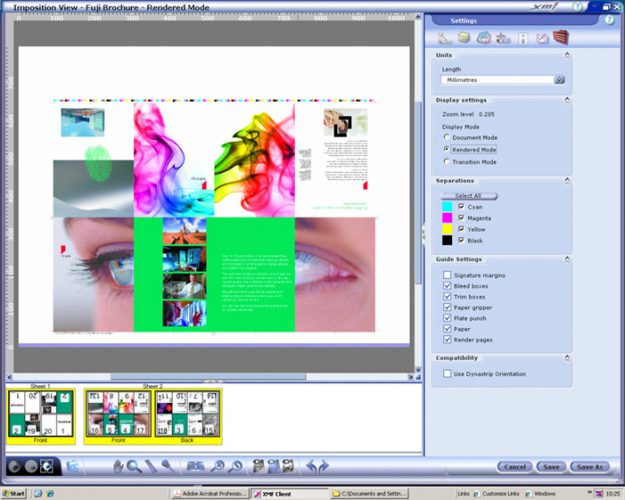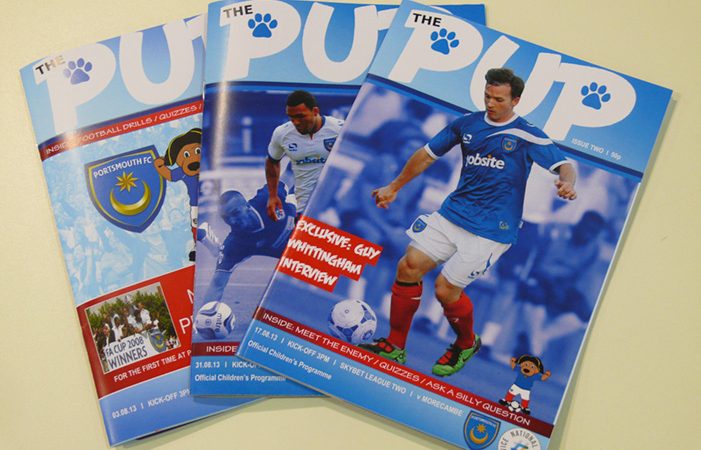Digital printing methods have one very powerful and unique advantage over all other printing methods. They can image data directly onto the page so that, as the page is being printed, the data stream can simultaneously change. Because the data on it can be varied, each page in a print run can be customised, meaning you can have whatever you want on each page from personalisation to complex image variability. The fact that each page in a print run can be a different version of the file from one page to the next, creates immense potentials for sharing ideas.
Digital lives
In the digital world we have all sorts of new ways of delivering data, from email and social media through to digitally printed customised prints. The trick in all scenarios is to make sure that the right information reaches the right recipient. This requires a combination of having access to the data, accurate and secure data processing, and knowing how to get the best out of a digital press. It sounds complicated but none of the technicalities needs to be your problem. Print service providers working with variable data print production tools are available to help you, so there’s no need for you to waste your time fighting with data processing systems. Work instead with a print service provider who has experience with this type of production, but make sure you understand the basics so that you can have a sensible conversation in the first place.
Variable data conversations
There are several approaches to producing variable data prints and all of them involve at least one database. The most ambitious variable data technology is the kind that produces credit card bills and bank statements. This work is produced in secure production environments, with each statement created as it is imaged but not stored anywhere except on the printed page. The model is the ultimate in combining diverse databases with other information and it is received practise in transactional print production.
Fortunately the principles of building variable data pages apply to much less ambitious types of work, but without the complexity. The most simple form of variable data production starts with very basic impositions or collections of individual data files imaged as single pages and printed on a large format press. This is how business cards often get produced, and how photolabs print your pictures: each file is positioned as tightly as possible onto a large format sheet, the sheet is imaged and printed and then cut into individual pages, cards or printed pictures. You can also use this approach for self-adhesive labels or scratch cards as well. Using imposition tools in this way is an easy means of getting value for money: print your jobs on a single sheet produced with a wide format digital press such as the EFI Pro 16H and then cut the sheet into single prints. You can use this model to produce multiple copies of say decals or small format posters at relatively low cost.
Match the tools to the task
You could use the same principles to produce multiple variations of a basic design, but you would have to build each page manually. This is fine if you are working on a piece targeted at a handful of people, but if you want to create anything more ambitious say 1,000 postcards or letters, you need help either from a service provider or you’ll have to get to grips with variable data software. HP SmartStream Mosaic is a random image generator that takes a master design saved as a PDF and tweaks it to create slightly different versions of the design. The PDF seed file is thus turned into a series of changing designs, that are different from page to page but visually related. HP recently introduced HP SmartStream Collage a next generation of Mosaic. It does the same thing but with objects, if you want to go really wild.
There are many, many tools on the market for variable data print production. But there are not necessarily many print service providers with the expertise to use them effectively for all kinds of work. One of the most widely used and well established tools is XMPie, which is available in various shapes and sizes depending on the scale of the job it is expected to do. XMPie connects databases to the page or any other channel and includes analytics and campaign management in a fully automated environment, so it’s very powerful and can be used to develop extremely ambitious wild format communications projects. HP partners with XMPie to provide variable data options for all of its printing systems customers. Make sure to choose a print service provider with the scope to match your ambitions.
Equally powerful is EFI’s FreeForm which is part of EFI’s Fiery digital controller. This software can be used for a wide range of versioning and customised page printing and EFI have a handy training kit that you can download (https://www.efi.com/en-gb/products/fiery-servers-and-software/fiery-workflow-suite/fiery-variable-data-printing-solutions/freeform-kit/). It includes some sample databases in the form of Excel spreadsheets and templates so you can mess about with it to really understand how variable data printing works. You never know – you might even get hooked.

You can ask your print service provider to impose a collection of pages and print them as a single page printed on a wide format digital printer. For a few variable content pages this is a convenient and easy approach that doesn’t require you to wrestle with databases.
But it’s more likely that you will prefer to work with a print service provider who has experience with producing this type of work. You’ll need to ensure that your master files are production ready and that the data you want to use to vary each page is in a suitable format for production. You should also make sure that you have permission to use the data from the data owners. The General Data Protection Regulation which recently came into force requires this and takes a dim view of organisations that don’t respect its rules.
Boldly go!
Producing variable data wild format projects might seem like a lot of trouble for not much return, which is fair enough. However, efforts into variable data print communications have been shown to improve response rates in various situations, most clearly in direct mail campaigns. The usual expectation with direct mail used to be a 2% response. But with personalisation, versioning and customisation, responses improve to 15% to 40% and sometimes higher.
So the effort is definitely worth it but don’t try to become a data engineer yourself, because there are plenty of print service providers with the tools and the experience to help you. You can expect to pay a bit more, but the results you will get will more than outweigh the extra expense. Shop around and see what you find, but before you do that have a clear idea of what you want to achieve, make sure that your production files are ready to be printed and be ready to be amazed at the feedback you get.
– Laurel Brunner
The Wild Format guides are intended to expand awareness and understanding of the craziness that can be created on wide format digital printing devices, from floors to lampshades and everything in between.
These guides are made possible by a group of manufacturers working together with Digital Dots.
This article is supported by EFI, Fujifilm, HP and Digital Dots.





